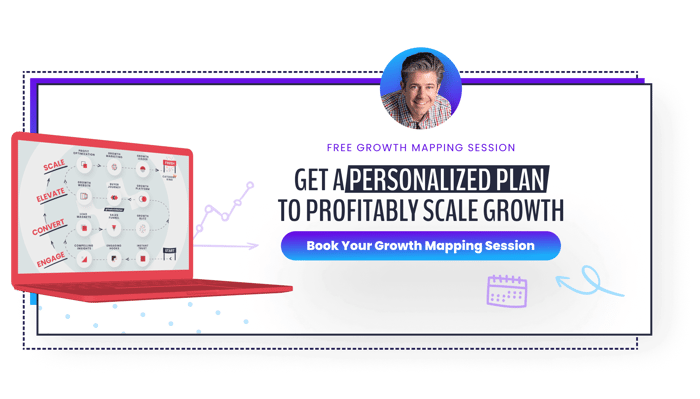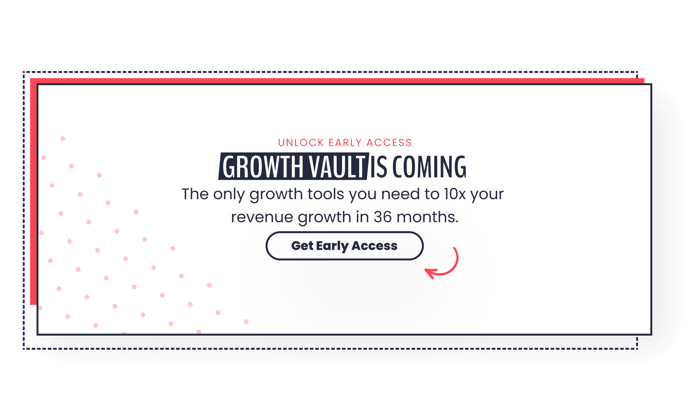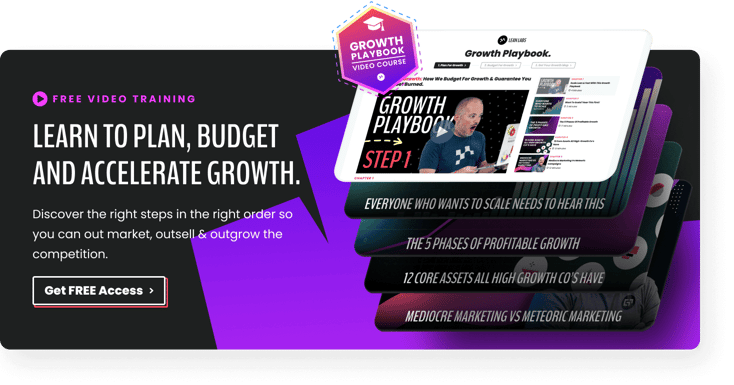As a marketer, you’re called upon to generate a lot of measurable results. Your success may be measured in metrics like website visitors, marketing-qualified leads generated, revenue, and return-on-investment.
While brand awareness — the percentage of your target market who are aware of your brand, services or products— is less measurable, it’s still critically important.
In fact, a lack of brand awareness is probably the root cause of all of your marketing woes. Lackluster leads, zero customer engagement, and nonexistent brand recognition can all be traced back to poor brand awareness.
Understanding the Value of B2B Brand Awareness
Think of brand awareness as the tide that lifts all your marketing boats. Of all the ways marketing success is measured, increasing brand awareness can positively affect them all.
For example, it can increase website traffic, particularly direct and organic search traffic. Here's how.
Let's assume the following for your website:
- You average 400 people coming to your website every month.
- You convert 25% of them (100 people) to MQLs.
- Of those 100, you convert 25% of them (25 people) to paying customers.
Now, you decide to invest in a few of the brand awareness tactics we detail below. Six months after you started, you now average 1,000 people coming to your website every month. If the math stays the same, you generate:
- 250 MQLs every month (instead of 100)
- 62 new customers every month (instead of 25)
Results like these are not automatic, but they are attainable when B2B marketers take a systematic approach to building B2B brand awareness as a core goal of their marketing strategy.
The true value of including brand awareness tactics in your marketing strategy is that it acts as a tide that lifts all boats. The following are tested and proven brand awareness tactics we've recommended and implemented for our clients and used ourselves.
8 Essential B2B Brand Awareness Tactics
1. Create Content Praising Your Customers
Do you have a customer doing something worth talking about? Does your product or service help them in some way?
Creating video spotlights or case studies on your customers should talk about what your customers are doing, not what you’re doing to help them. Your audience will understand how your products or services are helping. In fact, 83% of consumers trust recommendations from their peers over advertising.
Showcasing your client’s accomplishments can create authentic, highly-shareable content that resonates with your audience and is perceived as more trustworthy than a case study that heavily spotlights your brand’s intervention.
Plus, they want to see what your product or service is actually capable of. Client success stories embed a "maybe I can achieve that, too" narrative in prospects minds.
2. Create Behind-the-Scenes Videos
A recent Forbes headline declared “Authenticity In Marketing Matters Now More Than Ever.”
In the age of data breaches and brand scandals, honesty really is the best policy. According to recent surveys, customers identify authenticity as a top-quality that attracts them to a brand. One of the best ways to cast a light of authenticity and trust around your brand is to provide a behind-the-scenes video look at how you work.
Legendary Marketer Gary Vaynerchuk recently delivered a behind-the-scenes look at how his popular video series #AskGaryVee is made, earning tens of thousands of views in the process.
Other B2B brands who’ve delivered incredible, authentic video content on YouTube include LinkedIn’s behind-the-scenes look at their B2B Dinner for Five series and IBM’s up-close-and-personal look at how Grammy award-winning producer Alex Da Kid collaborated with Watson to turn data into cognitive music.
3. Give Value for Free
B2B marketers understand the importance of providing high-value content marketing for free to build B2B brand awareness, trust, and establish thought leadership. However, raising the bar even higher than your existing research-driven blog articles, white papers, and eBooks may be an important strategic tool.
Seventy-four percent of B2B decision-makers consider original research influential, according to CMI/SmartBrief. Arguably, research-driven content is the single most valuable form of branded content, second only to peer recommendations.
Our client built awareness around their trademark search software by producing a magazine-style report on the latest happenings in the global trademark world, including in-depth analysis of new laws and regulations. This very detailed report had content that was just as valuable as insights their clients in the legal field would pay for from a research firm.
Their decision to give away this research-driven content for free and make it a recurring periodical showed their commitment to delivering more value than their competitors.
4. Encourage Your People to Build their Brands
As humans, we’re not necessarily built to form connections with brands. We form connections more easily with people, including characters. B2B shouldn’t be afraid to be a company of “faces.”
Strategic Revolution’s Samantha Gold writes, “By adding a face to your brand you will allow consumers to have a relationship with your brand.”
There’s no shortage of examples of beloved brand “faces” in B2C. Think of:
- Lilly from AT&T
- Flo from Progressive
- Peyton Manning for Nationwide
- The Allstate "You're In Good Hands" guy
However, this is already happening in B2B even if you haven't noticed it. You just think of certain people when you hear their company's (or former company's) name:
- Drift - Dave Gerhardt
- Gong - Udi Ledergor
- Basecamp - Jason Fried
- Digital Marketer - Ryan Deiss
- ClickFunnels - Russell Brunson
But here's the tricky part. You know of these people because of their position at a company, but also because they've built a personal brand as well.
In the past, it was tempting to try and keep your company's brand and the personal brands of high-level employees separate. But now, entire company's, such as Refine Labs, are encouraging their entire staff to be active on social media and build their brands.
The reason? People will understand their expertise, see them as a generally nice person to be associated with, and see where they work. As they grow their network, more and more people gain an understanding of what they do and who they do it for.
5. Elevate a Unique, Influential Voice
ADP’s Business Anthropologist Dr. Martha Bird has assumed a prominent role in media and public relations, due to her background in cultural anthropology and valuable insights into concepts like employee experience.
In other cases, the most effective way to build brand awareness can be the choice to hire a face who already has an audience, influence, and thought leadership. Guy Kawasaki built credibility in his role as Chief Evangelist for Apple and author career and currently serves as Chief Evangelist for the simple, online design tool Canva.
6. Reach Out to Trusted Content Sources
While publishing content on “owned” marketing channels like your website, blog, and social media can help you build awareness, you may build exposure and audience trust more quickly if you establish relationships with publications that are already trusted by your audience.
The value of publishing B2B content through visible media sources has contributed to the massive success of Forbes BrandVoice, a paid content distribution platform used by massive B2B brands like SAP and HP to publish original, brand-authored content directly on Forbes’ website. While this particular program can be cost-prohibitive for small and mid-sized (SMB) companies, you can emulate its success tactics using lower-cost methodologies:
- Author Guest Blogs: Forget every sketchy SEO tactic you embraced in 2011 when it was all the rage to publish rapid-fire guest posts far and wide to earn a backlink. Today’s most effective guest blogging strategies rely on industry relationships and carefully authored content to publish well-placed perspectives on the right industry websites.
- Be a Podcast Guest: Millions of people prefer podcasts because they're asynchronous content that can be listened to whenever it's convenient. And with thousands of podcasts available across hundreds of industries and niches, there's no doubt you can find a particular audience who could benefit from your knowledge or that of your subject matter experts.
- Earn a Spot in Industry Publications: Author occasional, or regular, contributions to industry publications, including magazines, newsletters, technical journals, or locally-focused content.
- Respond to Queries: Connect with journalists from legitimate media sources to answer questions and earn quotations in news articles. The free, online resources Help a Reporter Out (HARO) allows industry experts to respond to source requests from journalists, including media at sources such as Reuters, Time, and The Wall Street Journal.
7. Participate in Live and Virtual Events
B2B brands have historically participated in live and virtual events such as conferences or trade shows, but paying for a booth at these events doesn’t always yield returns on investment. The most effective way to build brand awareness through participating in live events could be by securing a spot as a speaker.
Actively apply to present unique perspectives at industry conferences and tradeshows, while working to build the thought leadership necessary to become a sought-after speaker for live events.
Earning speaking opportunities requires thought leadership-building activities, many of which run in parallel to B2B brand awareness-building tactics. Learn more in The 3 Steps to Becoming a Respected Thought Leader.
8. Run social media and retargeting ads
For brands without a lot of awareness, social media and retargeting ads can be beneficial for a few reasons.
First, social media ads allow you to reach more of your target audience for cheaper than many other paid awareness channels.
Second, retargeting ads allow to possibly recapture those who have visited key pages on your website.
And finally, both types of these ads help you test your website's messaging and your targeting. For example, if you're getting a lot of clicks but not a lot of conversions, you may need to clean up your destination page's copy and make it more conversion-focused. This could also mean your targeting and who you think your customer is needs to evolve.
Creating a B2B Brand Awareness Strategy
When it comes to building brand awareness for B2B, marketers are wise to think about tactics as part of an awareness-building strategy instead of stand-alone tactics for awareness.
As marketing entrepreneur Donny Kemick points out, “The abundance of online tools or tactics at your disposal can be a double-edged sword.”
The good news? Your brand doesn’t have to invest in high-cost billboards or television ads to build awareness.
The bad news? Making the most of the low-cost, digital options for building brand awareness may not pay off if you don’t understand the value of B2B brand awareness or your long-term strategy for recognition.
Ultimately the most effective B2B brand awareness tactics will focus on building exposure, trust, and thought leadership, while maintaining your team’s progress towards goals for website traffic, leads generated, and revenue. By understanding how your audience researches and learns online, you can increase your presence and authority on the right digital channels.








